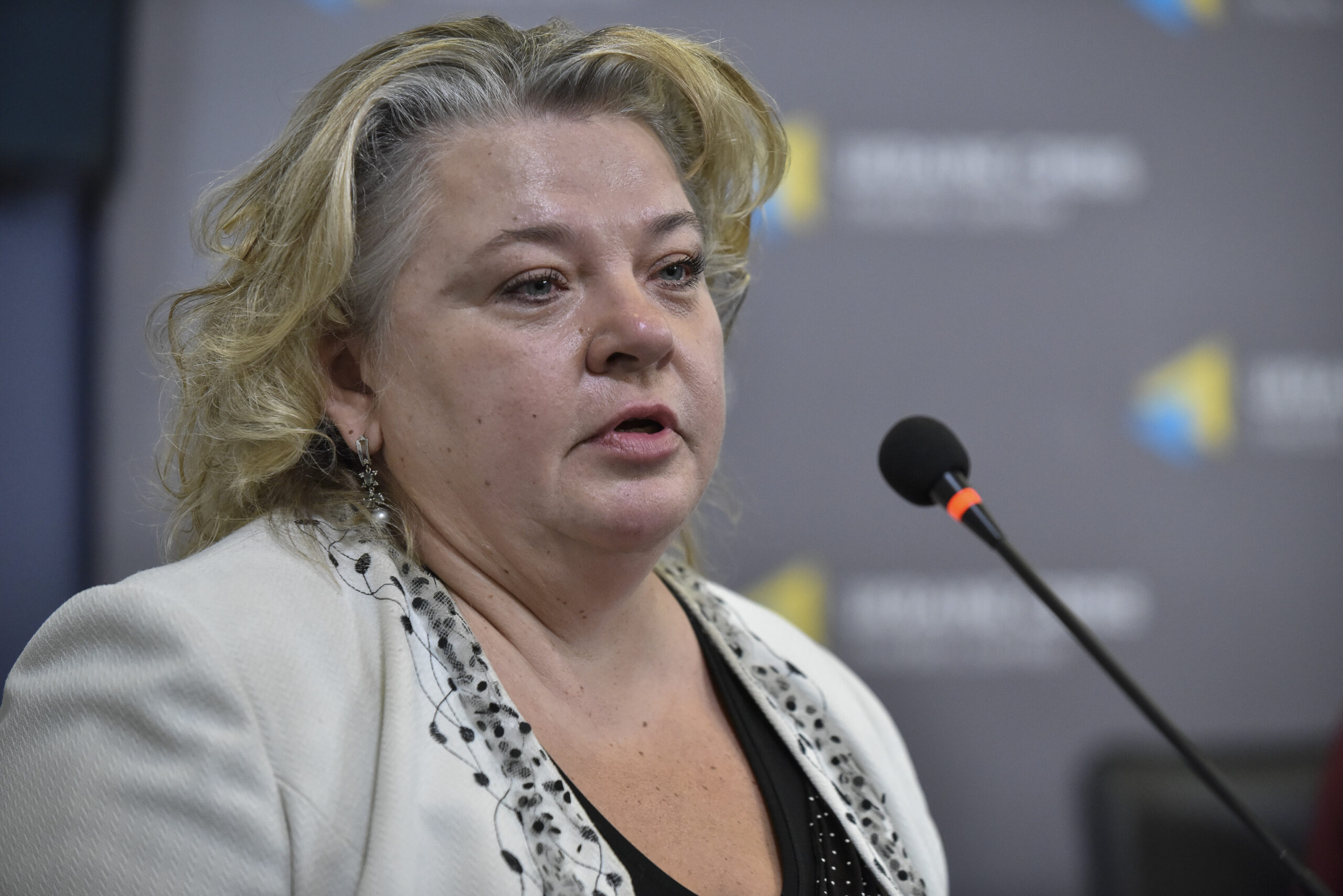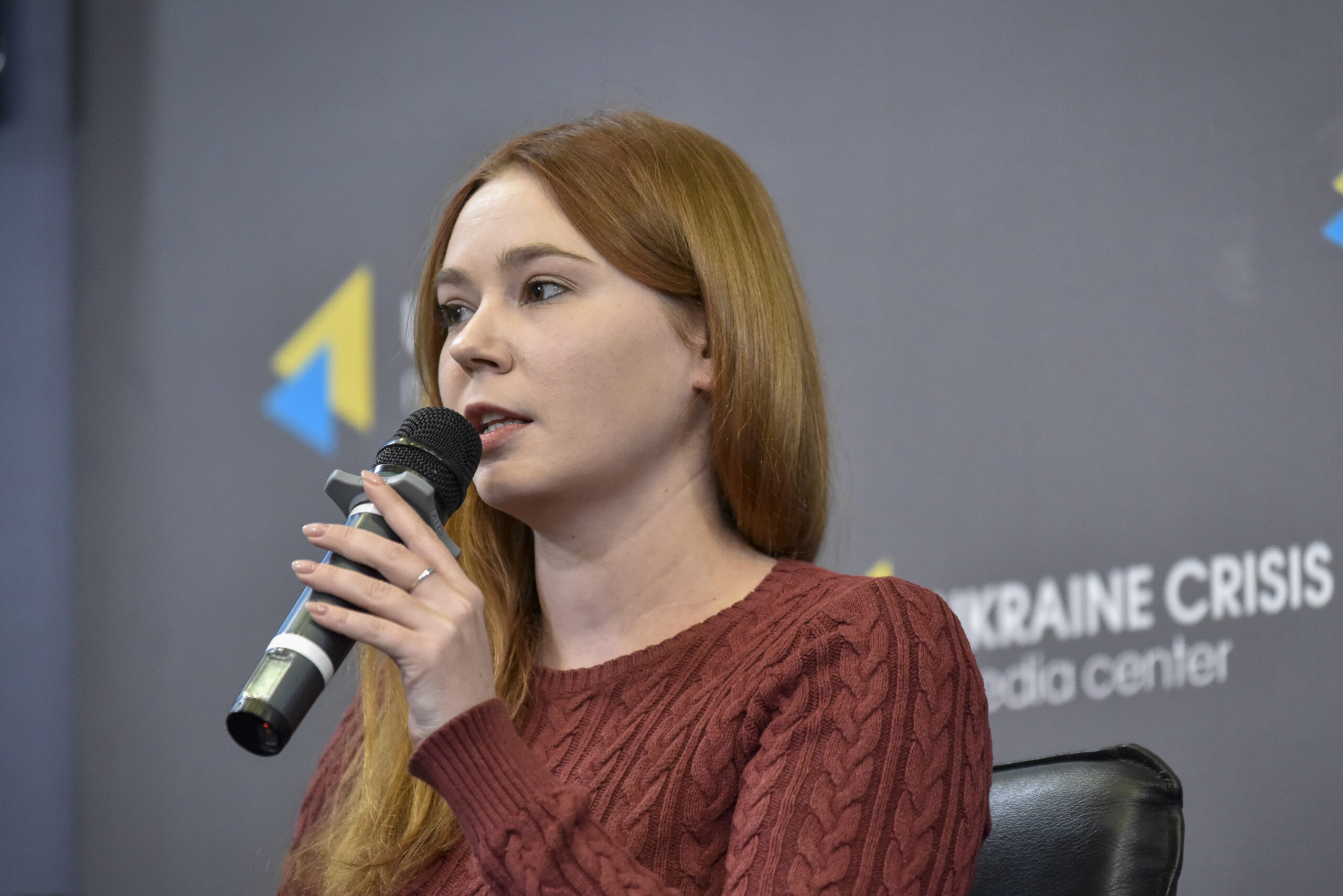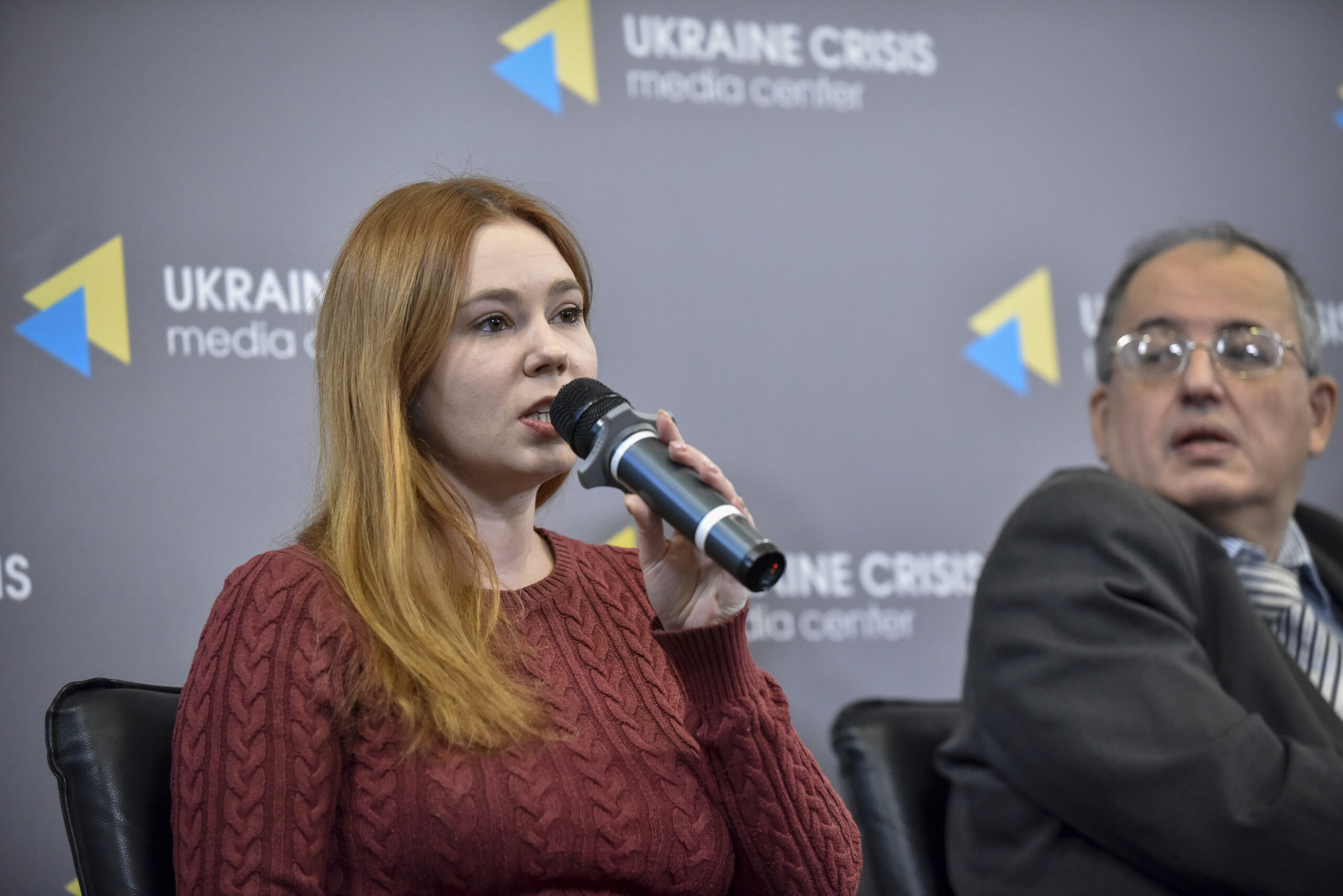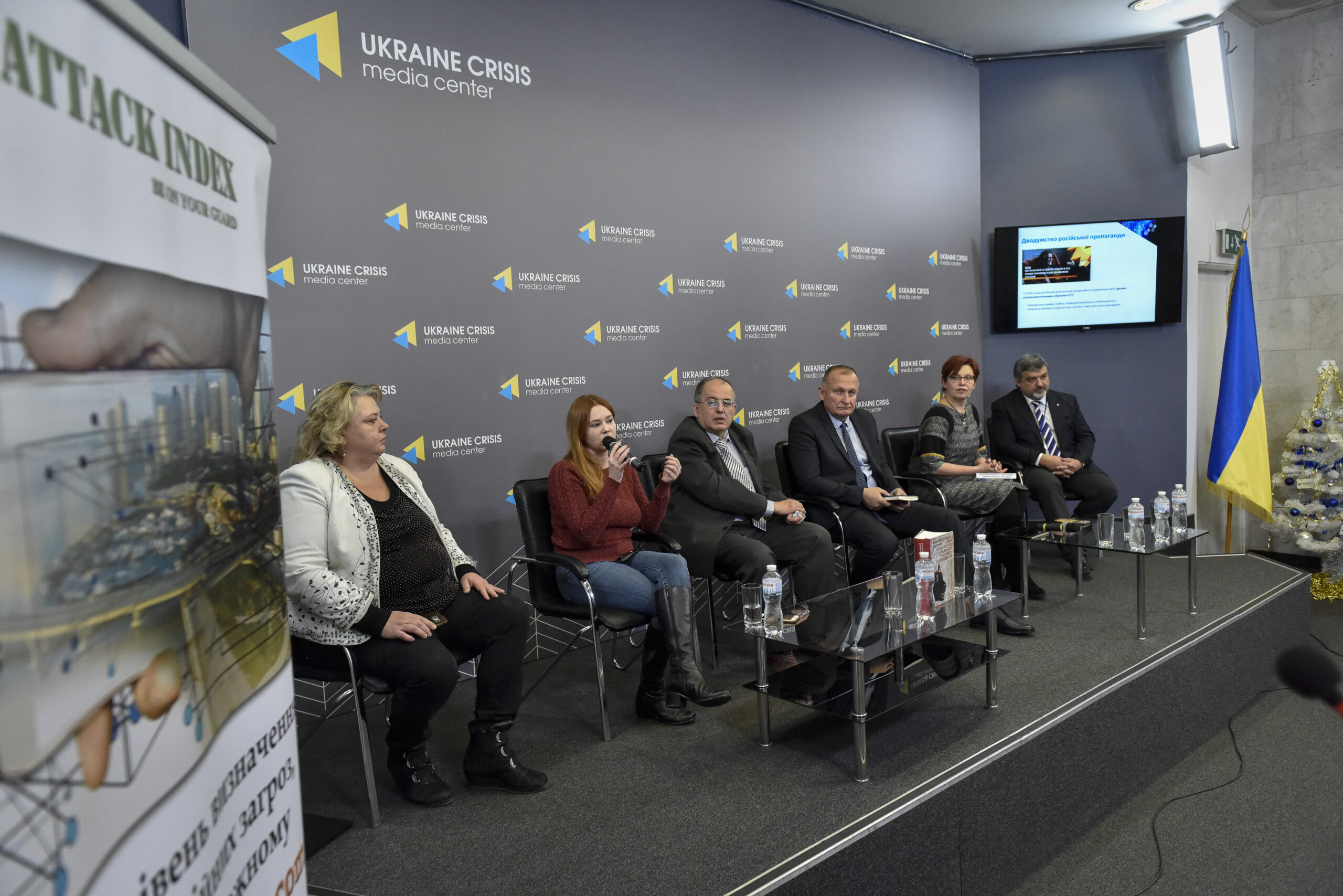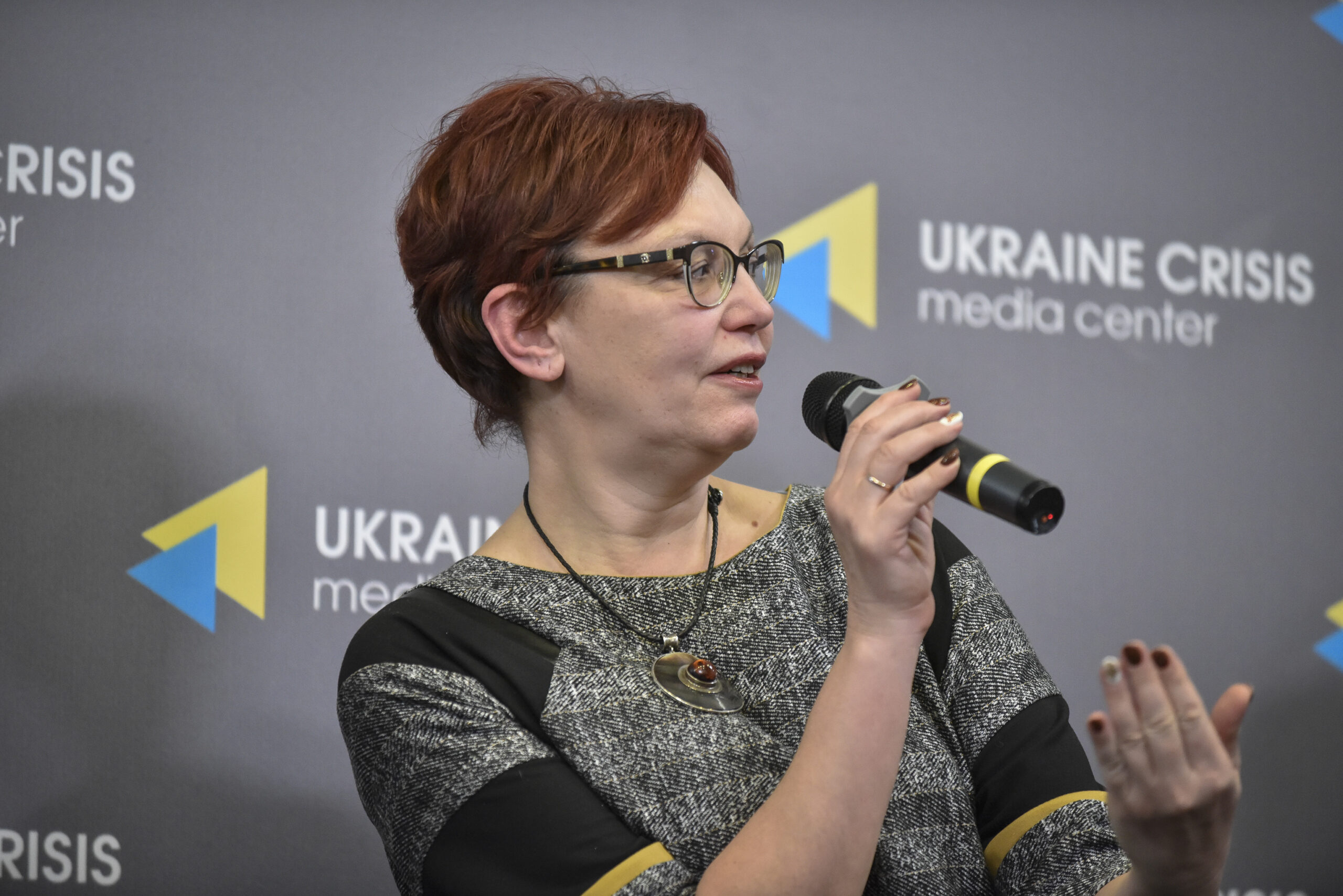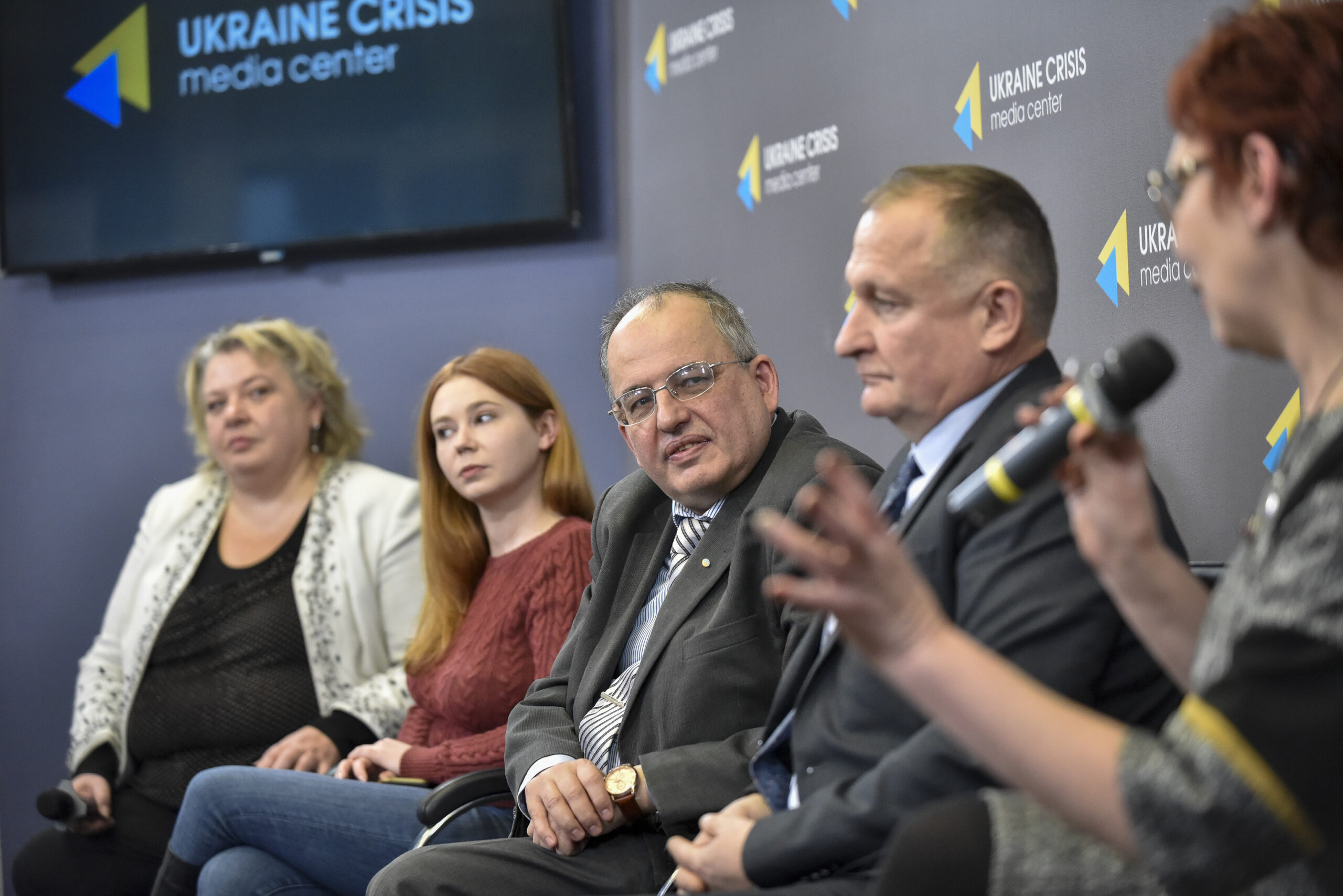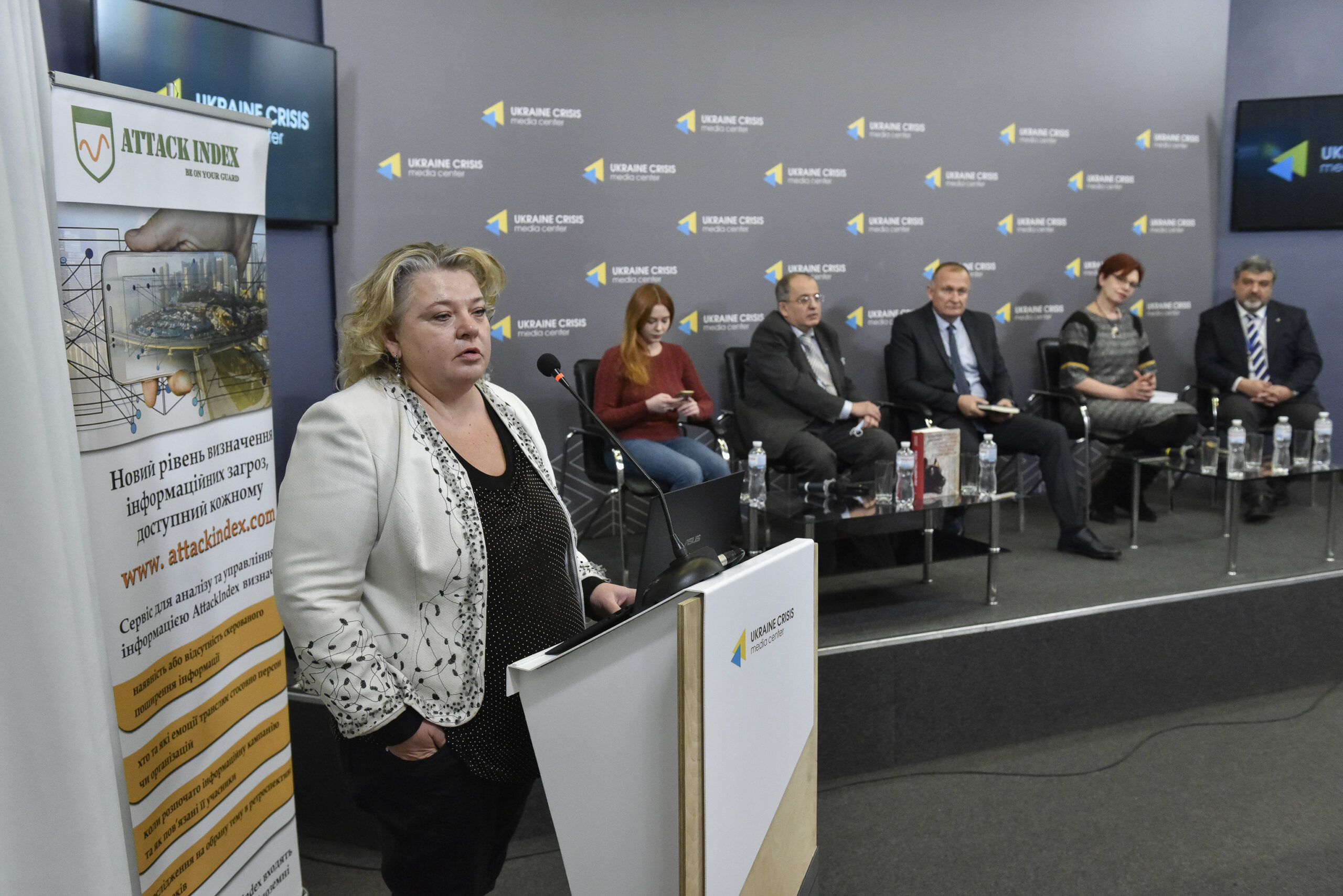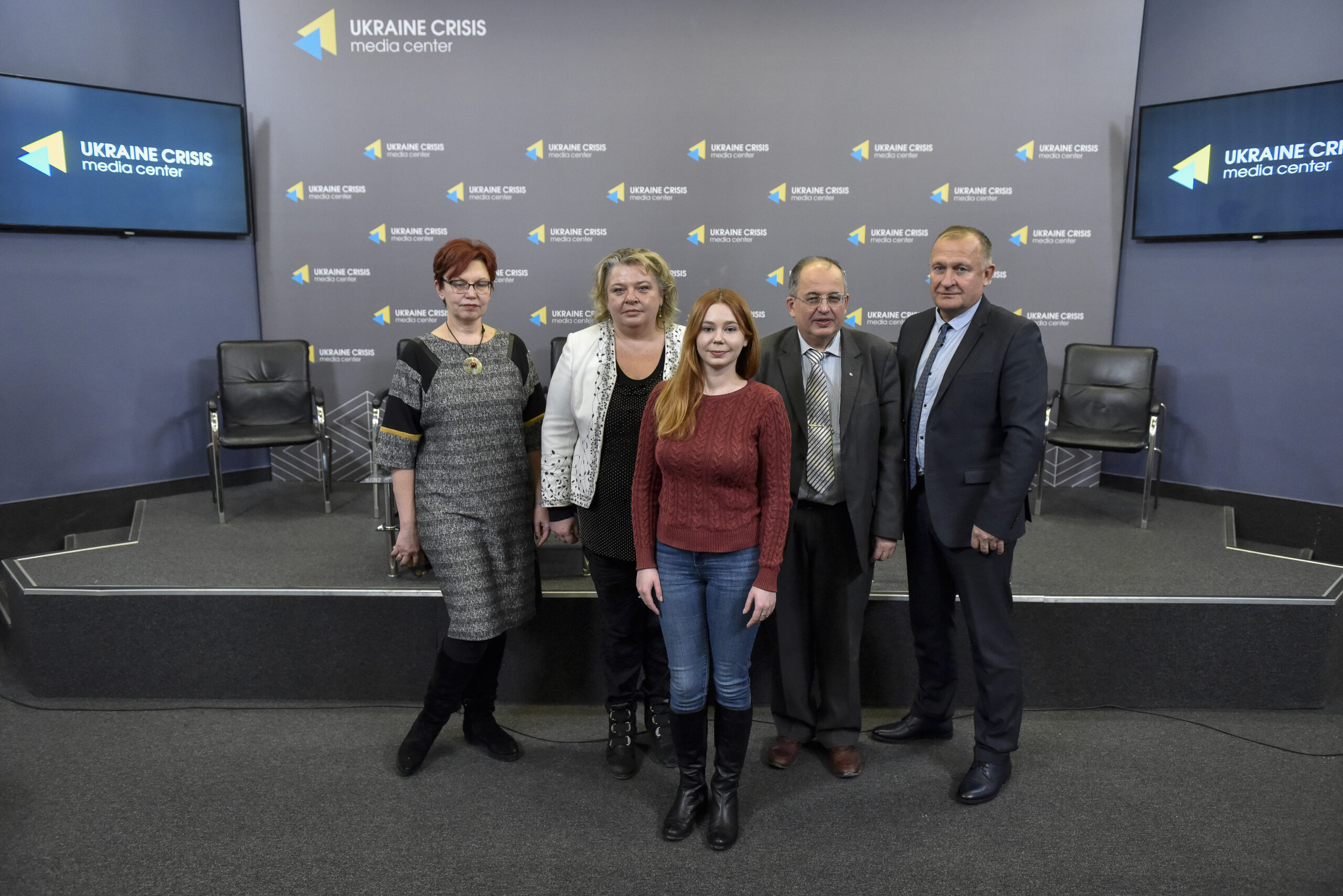A panel discussion “Information Operation Christmas” was held on December 23 at the press center of Ukraine Crisis Media Center. The event was dedicated to summarizing the trends of the information space in 2021 and forecasts for the near future. The press conference was co-organized by Ukraine Crisis Media Center.
In her introductory speech, Ellina Shnurko-Tabakova, information security expert and Chair of the Information Security and Cyber Defense Council, recalled that this was the fourth such event summarizing the passing year. The speaker regretted that the escalation of threats and blackmail by Russia had not been predicted in advance.
“We focused on this topic – and we want to show from different angles what is happening in the information space, what hybrid warfare means and what it consists of. It is no coincidence that we have speakers with a scientific background, as well as practitioners and even the military. I hope that after our event we will take another step towards uniting those who stand together at the front of resistance against hybrid threats,” Shnurko-Tabakova said.
Oleksandra Tsekhanovska, Head of the Hybrid Warfare Analytical Group of Ukraine Crisis Media Center, spoke about the main narratives of Russian propaganda about the Armed Forces of Ukraine in 2021.
“We will talk about serious things, but without losing humor. This is one of the best tools to protect ourselves and our community from panic and chaos, which the Kremlin and Russian propaganda are constantly trying to impose on us,” Tsekhanovska said.
The speaker summed up that the propaganda about the Ukrainian army is “schizophrenic” – that is, it consists of mutually exclusive narratives. For example, a constant refrain is mentioning the incompetence of the Ukrainian army, and at the same time – that Ukraine is preparing an attack against the illegal armed groups in Donbas. Tsekhanovska reminded of the constant kaleidoscope of Kremlin versions regarding the crash of flight MH17: the responsibility is constantly placed on Ukraine, but each time in a new way.
“One of the strategic goals of disinformation is to sow chaos and dismay among readers and viewers. A world in which the reader believes that no one can be trusted is a threat to our security. In such a world, all Russian propaganda and fakes, everything that Russia-1, Russia Today and others are doing are on the same level with real professional media with high standards of journalism,” the expert stressed.
Tsekhanovska summarized the main information attacks on the incompetence of the Ukrainian army: alleged mass dismissals from the Armed Forces, problems with alcohol and corruption. Subsequently, local agents of influence import these narratives into the Ukrainian information space. The same is true about the “mantra” of shelling civilian objects and the deaths of civilians as a result.
The expert also summarized new topics in Russian propaganda. First, it is the thesis that Ukraine spends too much on the army, although it has other problems. The speaker stressed that this shows that the Kremlin is aware of the threat from the Ukrainian Armed Forces. Secondly, these are indications that the Armed Forces are suffering from a pandemic and this has undermined their combat effectiveness.
The evolution of the Russian propaganda narratives can be traced to the example of the Turkish Bayraktar drones used by the Armed Forces – at first, the fact of their use was denied, but later the discourse diverted to it being done wrong.
Since October, the discourse on Ukraine as an aggressor, which is supposed to justify Russia’s military preparations, has intensified. It is in this context that the recent statement of RF’s Minister of Defense Shoigu about alleged chemical weapons in Donbas can be placed – it was immediately picked up by the media of the occupied territories with “frightening details”. Both the Russian media and their repeaters in Ukraine also actively used the message “Biden abandoned Afghanistan and will abandon Ukraine”.
“All this shows that Ukraine is a serious opponent for the Kremlin. We must make sure to prove them right,” the speaker summed up.
The representative of the Special Operations Command of the Armed Forces of Ukraine spoke remotely and expressed the official vision of the SOC at the AFU on how Russian information covert operations on Ukraine are carried out.
The speaker pointed out that the Kremlin’s propaganda machine is structured vertically. Narratives from the Russian President’s Administration go down to “opinion leaders” or information torpedoes of the “Lavrov-Zakharova-Peskov level”, and from them, they are broadcast on federal TV channels, from where they are then widely distributed for bot networks and other agents of influence. Russian propaganda has three directions: the world community in general, its own population, and the population of Ukraine.
The SOC at the AFU command representative drew attention to the “Achilles’ heels” of the Russian state propaganda system, which can be used by Ukraine in counteracting these information and psychological operations. Russian intelligence officers are poorly motivated for such activity and do not act in accordance with the statute, which is why their personal information often appears on dubious dating sites or is freely available on social networks. And if this information is handled well, it could deal a telling blow to the Kremlin.
Eventually, immunity against Russian propaganda has already begun to develop among both Ukrainians and the world community. In the end, the officer reminded, Russia has enough internal problems that significantly undermine both its defense capabilities in general and the persuasiveness of propaganda in particular.
Oleksandr Korystin, Doctor of Law, Professor at the State Research Institute of the Ministry of Internal Affairs of Ukraine, spoke about the results of a thorough study conducted by an interagency group, which included both a poll and building a 131 hybrid threat matrix. The results of this study will be brought to the top state leadership’s attention.
Based on the methodology of risk management, researchers have developed recommendations to combat these hybrid threats. For example, among the most potentially catastrophic was the threat of attacks on nuclear power facilities (its probability was estimated as average), but the probability of a critical but not “deadly” threat of cyberattacks has already been called high – therefore, state security specialists should give special attention to the latter.
“The emphasis should be on our ability to withstand threats. We have selected with you the most significant of them. But the question is, are we able to withstand these hybrid threats? This is the importance of our meeting as a civic initiative! The more such initiatives, the more we will approach the appropriate level, which is needed in a hybrid war,” summed up Korystin.
Larysa Kompantseva, Doctor of Philology, Professor at the National Academy of the Security Service of Ukraine, spoke about the formation of the direction of the strategic communications, a significant impetus for which was given by the relevant Ukraine-NATO roadmap five years ago. Due to this, for the first time in Ukraine, a training course on strategic communications was developed, which since 2016, has been attended by more than 700 government and military personnel working in the field of security and resistance to hybrid threats.
For example, Kompantseva’s research team developed a glossary of basic strategic communications terminology based on NATO documents. It was also possible to predict the consequences of the emergence of the “Russian Donbass” doctrine in March this year – researchers found that further intensification of Russia’s aggressive intentions would take place, which we see today.
Dmytro Lande, Doctor of Technical Sciences, Professor, Head of the Information Security Department at the Faculty of Physics and Technology, Igor Sikorsky Kyiv Polytechnic Institute, spoke about the “digital” dimension of information wars on the Internet, which even civilian specialists can analyze. For example, based on the analysis of open sources in 2014-15, it was possible to establish a clear correlation between the arrival of the next RF’s “humanitarian convoy” in the occupied part of Donbas and the escalation of shelling, which occurred steadily in the week after the shipment.
Lande was involved in the AttackIndex system development, which, using correlation and fractal analysis, enables detecting information attacks, the target of which can be not only the Armed Forces of Ukraine but also any public or private structures. Information systems allow you to produce charts, based on which the analyst will draw specific conclusions about the attacks.
Volodymyr Rapko, Lieutenant General of the Reserve, Chief of Ukrainian Signal Corps 2014-2020, reassured the audience: in the dimension of military cybersecurity in Ukraine, “everything is there and everything works, but it needs to be improved”.
The general recalled that even 20 years ago, conversations about cyber threats made the “big commanders” smile. However, from 2008-2009 the main military forces of the world began active preparations for special operations in this area. The creation of cyber units in Ukraine started at the same time, after Russia’s attack on Georgia. And already in the summer of this year, the President of Ukraine made a decision to create separate cyber forces.
As examples, General Rapko cited Israel’s knockout of Syria’s air defenses in 2007 through a cyber attack that allowed it to carry out its tasks – as well as an attack on Ukraine’s energy system in 2016 that had openly Russian origin. As a result of the latter, 220,000 people were left without light for three hours – and it is proven that the potential damage could be much greater.
The defense official also summarized the challenges and tasks Ukraine faces in the field of cyber security. This is, on the one hand, the speed of change in this area and its comprehensiveness, and on the other – the traditional limited resources, including human resources, as well as organizational problems.
Finally, the speakers received the book “Intelligence of Ancient Rome and its opponents” by former military intelligence analyst Volodymyr Dmytrenko from Calvariia publishing house as a gift.

